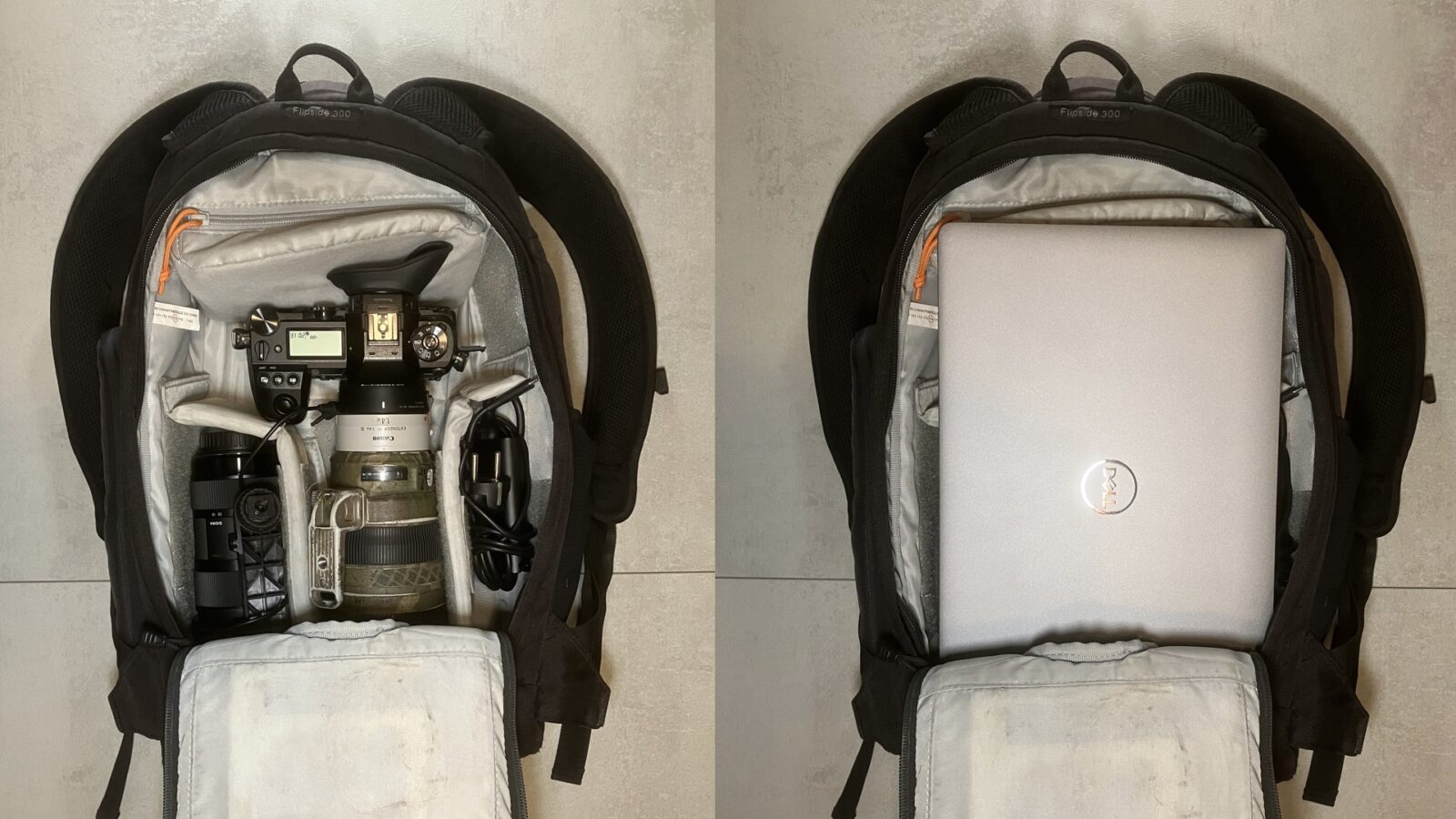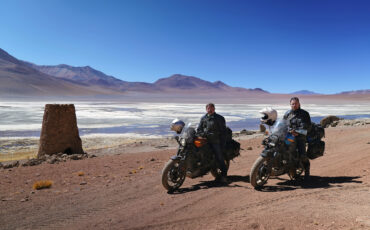“Tracking the Black Panther” – a Wildlife Film Using Minimal Gear
In Early November 2022, I had the chance to visit Pench National Park in central India during a business trip and made a mini-documentary about it. When I showed it to Johnnie he asked if I would write a post about it describing my approach to how I filmed and edited this wildlife film. Curious to know more? Then read on…
I am very passionate about exploring the relationship between humans and nature using the medium of film. I love to work on these personal projects without any restrictions, as I am free to do them exactly as I want. Letting the creative juices flow is something I find deeply satisfying.
So when my Indian business colleague, avid wildlife photographer, and friend Parag Aklujkar heard that I was traveling to India, he rang me up and mentioned that a rare black panther has recently been sighted in Pench National park – a filming opportunity we should not miss! Accordingly, I extended my trip for a weekend and started planning.
What never ceases to amaze me, is that there are more than 100 million people in India, who are living in close proximity to tiger and leopard habitats. Although there are about 50 human casualties per year due to human-tiger conflict, these people have a deep-rooted spiritual belief in peaceful coexistence with wild animals. Without that, the large Bengal tiger most likely would have already gone extinct years ago.

The black panther or black (melanistic) leopard is a very rare color variant of the normal leopard (see image above). In the whole of India, there are about 8.000 – 10.000 leopards, but only 6 black panthers that we currently know of. So seeing (or filming) one is a very very rare happening, to say the least. Our tour guide Abhay, who has organized over 2000 safaris, has never spotted one himself. Nevertheless, we shot our shot and did it! I am not adding any images here, to not spoil the film!
At this point, I’d like to recommend watching the video first, as I will refer to many of the scenes above.
Shooting wildlife film – Equipment
Now, as I was traveling across the country to visit with clients and adding the bonus weekend, it wasn’t possible to go excessive with the camera gear.
It all had to fit in my Lowepro Flipside 300 backpack (28x21x49cm) below 8kg to be able to take it into the cabin of the plane.
Shooting wildlife film – Cameras
Following the above size restrictions, my Blackmagic Pocket Cinema Camera 6K had to stay at home. Instead, I took my trusty Panasonic LUMIX S1 with me. This camera can film both full frame and in APS-C crop mode in 4K 10bit 4:2:2 with the V-LOG upgrade installed. In APS-C it has a very low rolling shutter of around 10.4 ms, 60fps plus you get extended reach due to the crop – all very welcomed features for making a wildlife film.

Also, the dual native ISO of 640 and 4000 is very useful – even during daylight, shooting in a dense forest @400mm (f5.6) plus using the 1.4x extender results in an aperture of f8.0 – here I frequently and comfortably used ISO4000, knowing that it would have almost no impact on the final image (vs. ISO640).
Two additional batteries and SD cards plus a charger were plenty to carry me through the day, considering the good battery life and very efficient bitrate of the internal H264 10-bit codec (Long GOP 150Mb/s).
In addition, I purchased the bigger Panasonic DMW-EC6GU-K eyecup which helps a lot in broad daylight to eliminate stray light. I am a fan of viewfinders, as it keeps the setup small and here the Panasonic S1 viewfinder (OLED, 5.76k dots) really does shine: a bright, very high-resolution image to manually pull focus in all filming situations is all I ever needed.

As a second camera, without hesitation, I took the GoPro HERO11 with me (which I already sent back, hence it is not pictured above). It now offers 10-bit video, has a gimbal-like stabilization and audio is quite usable. In fact, most of the scenes in the safari vehicle, also a lot of the dialogue are shot with the GoPro. This way I had the S1 with the big lens ready but I could still film all the little interactions and driving shots in between.
Image wise it was a bit of a compromise obviously, especially in lower light situations, but all in all, I think it intercut well with the Panasonic S1.
Shooting wildlife film – Lenses
Of course, my go-to lens Canon EF 100-400mm f/4.5-5.6L IS II USM as well as the Canon 1.4x extender V3 with the SIGMA MC21 EF – L mount adaptor had to come along. In combination with the APS-C mode of the LUMIX S1, I would get an equivalent reach of 840mm on the long end, while having 100mm in full frame (without extender) on the short end.
For the wide and medium angles, I decided on the SIGMA 18-35mm F1.8 DC HSM Art. This is an APS-C lens and would cover me from 27mm – 52.5mm full-frame equivalent. I love the look of this lens, especially wide open at f1.8 and it is comparatively small. The fast aperture of f1.8 help in lowlight situations as well.
The only downside of this combination (i.e. EF lenses with the SIGMA MC21 adapter) is the availability of “single focus” only. Hence, no continuous autofocus – therefore focus for every single shot in this film was pulled manually.
Also, I used a little trick in cases a wider lens was needed: at around 22mm the Sigma 18-35mm almost covers full-frame; you do get vignetting, still. But at night, f1.8 and with the right composition it is not so noticeable, giving me a very wide option in case it was needed:
This little trick only works because my SIGMA 18-35mm is a Nikon mount, using a “dumb”, mechanical Nikon F- L mount adapter. If I had used an EF version of this lens the full frame option would have been locked as the MC21 adapter recognizes if a lens is for APS-C only.
Audio
It was very tough to decide on audio equipment. When making a wildlife film, you want to have a good stereo sound to capture the ambiance. To capture the sounds of animals and also the dialogue of humans a shotgun mic is ideal. For interviews, proper lavalier mics and a wireless transmitter/receiver system is the way to go.
Again, I settled for a compromise: I used the TASCAM TM-2X stereo capsules, plugged directly into the LUMIX S1, and left the shotgun at home (as I didn’t have the space for it). The TM-2X is a surprisingly good but cost-efficient stereo mic (around 100€) which captures ambiance in really good quality. I also used it for dialogue (e.g. the introduction of Parag and Abhay and for one scene at the fire).
Now you might say, how can you capture proper dialogue with a stereo mic!? Here, a superb new feature of DaVinci Resolve 18 comes into play, which I also used to enhance voice with a lot of the GoPro scenes: Voice Isolation. This is an artificial intelligence-based algorithm that detects the human voice and isolates it from background sounds. You can dial in the strength, and it doesn’t sound artificial.
For the fireside chat, I used the RØDE Wireless GO II kit, using the transmitter’s microphones directly without any lavaliers. The issue here was, that we had a really nice conversation going on at the fire, which I wanted to capture. So I quickly set up the camera and snapped the Wireless GO II transmitters directly on me and on Parag, the receiver plugged into the LUMIX S1. Had I fumbled around to set up lavalier microphones as well, I think our conversation would have died off quickly.
Being fast is not always good, as I forgot to adjust the input sound level on the LUMIX S1, and as such the whole conversation was clipped in the video file. A nice feature of the Wireless GO II kit saved me: the transmitters have an internal backup recording feature (in case the transmission gets lost), hence I had a nice clean WAV file to work with in post-realigning the clips using Resolve’s synchronization feature which aligns audio with video.
Postproduction with DaVinci Resolve Studio 18.1
Obviously, everything was shot handheld, and here the IBIS of the LUMIX S1 in combination with the image stabilization of the Canon 100-400mm lens was very helpful. APS-C crop shots were easy to further stabilize in DaVinci Resolve without warp effects, due to the low rolling shutter of 10.4ms. For some of the shots, I was even able to tick the “Camera Lock” in the Stabilizer tab – mimicking a tripod.
The standard picture profile was V-Log, and I color-graded everything using the “Golden 1 33 E-E” LUT from the Panasonic VariCam LUT pack. Adjusting the white balance in Resolve to about -700K (in the “Primaries – Color Bars” tab) gave me a very good starting point, and from there onwards I used the “Lift”, “Gamma” and “Gain” controls to add/remove contrast. Some of the shots were a bit noisy, so adding a tiny bit of temporal noise reduction helped a great deal.
Overall, I am really impressed with how far you can push the internally recorded 150Mbit/s H264 10-bit codec. It is a rock-solid image despite the low bitrate. The results reminded me again that you don’t always need RAW and 2000 Mbit/s bitrate (hello BMPCC6K)…
For the GoPro shots, I added a bit of motion blur in Resolve to smooth out the moving shots as I didn’t have ND filters with me.
In the Resolve Fairlight tab, I did a bit of audio work to improve the dialogue scenes (using the “Vocal Channel”, “Multiband compressor”, “Dynamics” and “EQ” controls – there is a good tutorial here in case you’re interested), and as mentioned above I used the new voice isolation quite a few times. It is really amazing how well this works, even on GoPro audio!
All the music was licensed from Audio Network – they have a really nice collection of orchestral scores.
What do you think of this approach to making a wildlife film? Anything you want to mention in terms of wildlife gear? What are you using? Let us know in the comments below …




































